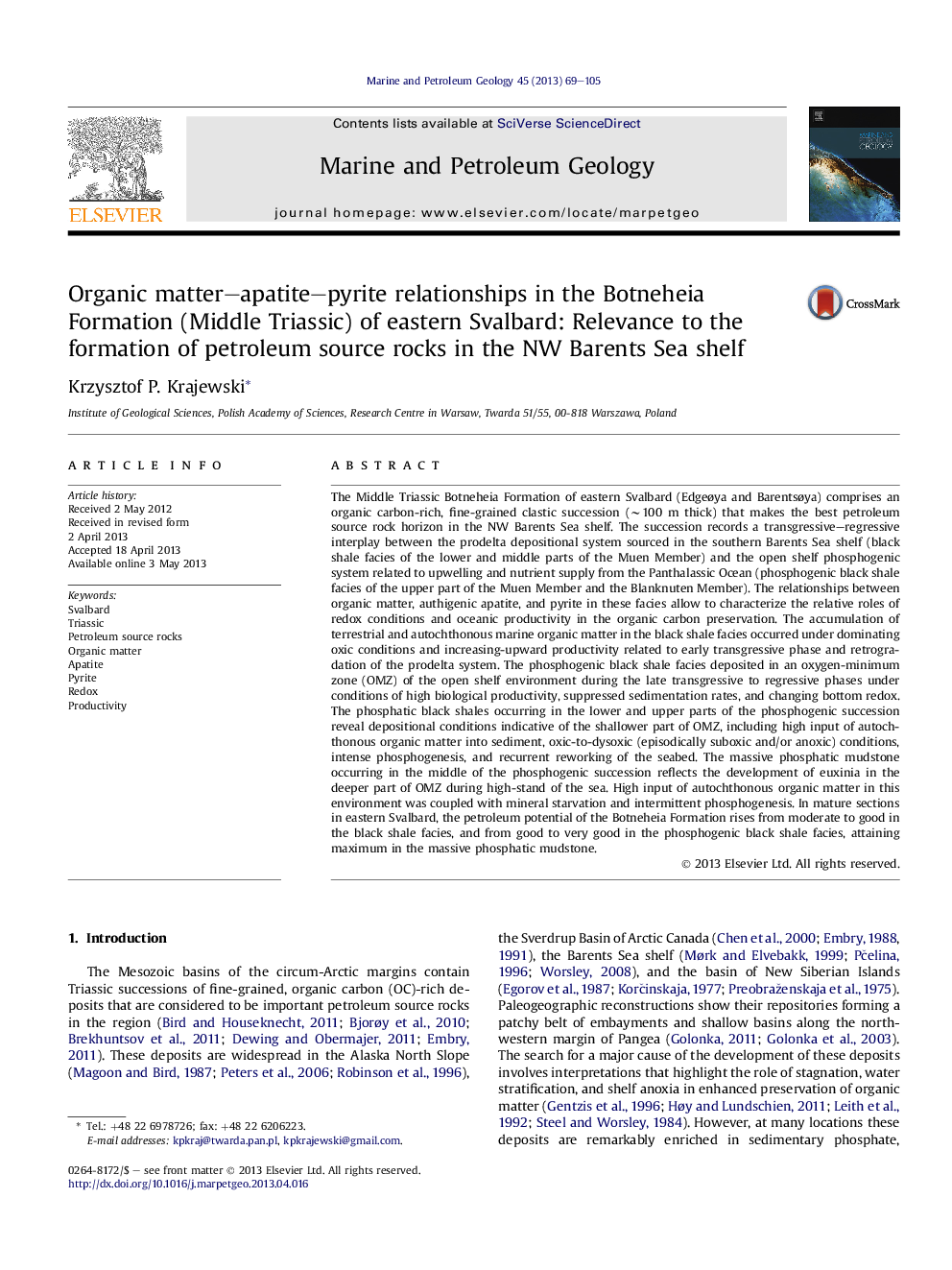| کد مقاله | کد نشریه | سال انتشار | مقاله انگلیسی | نسخه تمام متن |
|---|---|---|---|---|
| 6435481 | 1637179 | 2013 | 37 صفحه PDF | دانلود رایگان |

- The Triassic Botneheia Formation is best petroleum source rock horizon in Svalbard.
- A new model of deposition of the organic-rich, oil-prone facies is proposed.
- Interplay between prodelta and phosphogenic shelf depositional system is documented.
- Organic matter, apatite and pyrite association reflects high biological productivity.
- Oxygen minimum zone and euxinia resulted from transgression and upwelling.
The Middle Triassic Botneheia Formation of eastern Svalbard (Edgeøya and Barentsøya) comprises an organic carbon-rich, fine-grained clastic succession (â¼100 m thick) that makes the best petroleum source rock horizon in the NW Barents Sea shelf. The succession records a transgressive-regressive interplay between the prodelta depositional system sourced in the southern Barents Sea shelf (black shale facies of the lower and middle parts of the Muen Member) and the open shelf phosphogenic system related to upwelling and nutrient supply from the Panthalassic Ocean (phosphogenic black shale facies of the upper part of the Muen Member and the Blanknuten Member). The relationships between organic matter, authigenic apatite, and pyrite in these facies allow to characterize the relative roles of redox conditions and oceanic productivity in the organic carbon preservation. The accumulation of terrestrial and autochthonous marine organic matter in the black shale facies occurred under dominating oxic conditions and increasing-upward productivity related to early transgressive phase and retrogradation of the prodelta system. The phosphogenic black shale facies deposited in an oxygen-minimum zone (OMZ) of the open shelf environment during the late transgressive to regressive phases under conditions of high biological productivity, suppressed sedimentation rates, and changing bottom redox. The phosphatic black shales occurring in the lower and upper parts of the phosphogenic succession reveal depositional conditions indicative of the shallower part of OMZ, including high input of autochthonous organic matter into sediment, oxic-to-dysoxic (episodically suboxic and/or anoxic) conditions, intense phosphogenesis, and recurrent reworking of the seabed. The massive phosphatic mudstone occurring in the middle of the phosphogenic succession reflects the development of euxinia in the deeper part of OMZ during high-stand of the sea. High input of autochthonous organic matter in this environment was coupled with mineral starvation and intermittent phosphogenesis. In mature sections in eastern Svalbard, the petroleum potential of the Botneheia Formation rises from moderate to good in the black shale facies, and from good to very good in the phosphogenic black shale facies, attaining maximum in the massive phosphatic mudstone.
Journal: Marine and Petroleum Geology - Volume 45, August 2013, Pages 69-105